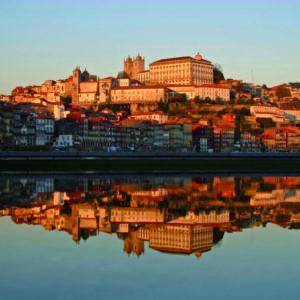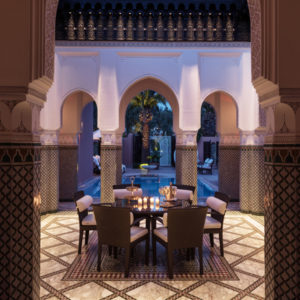Video courtesy of Spain Espana Tourism
Separated from the rest of Europe by the Pyrenees, Spain reaches south towards the coast of North Africa and has both Atlantic and Mediterranean coastlines. The familiar images of its rich cultural heritage, flamenco dancing, bullfighting and tapas bars hint at the diversity of the country. It overflows with contrasts since there are four official languages, a range of landscapes from snow-capped peaks to green meadows, prehistoric caves, orange groves, a sunny Riviera and the desert of Almeria.
Other wonderful regions and cities to explore: San Sebastian – Rioja, Costa Brava, Costa del Sol, Ribera del Duero, Santiago de Compostela, Toledo, Bilboa, Burgos, Cordoba
The true heart of Barcelona lies in the Barri Gotic (Gothic Quarter), a twisting maze of mysterious streets representing the oldest part of the city. Among its wealth of medieval buildings are the Cathedral, the Picasso Museum and La Ramblas, Barcelona’s most famous street.
Europe’s most unconventional church, the Sagrada Familia, is considered Barcelona’s most eccentric landmark. Crammed with symbolism, it epitomizes Gaudi’s greatest work, having become his life’s endeavor for 16 years. The most complete part of the church is the Nativity facade, its doorways representing Faith, Hope and Charity.
The Placa del Rei, the city’s most historic square and a place where tradition lives, was where Columbus was greeted on his return from the New World.
The Museo del Prado is an extensive complex of numerous galleries. The museum contains over 5000 canvases from the Iberian peninsula and the rest of the continent, many collected by Spanish monarchs between the 15th and 18th centuries. Adjacent to the museum, explore the Botanical Garden, where the exquisite and colourful collection of flora invites a lazy, sun-filled afternoon stroll. Located just a short walk from the Prado, visit the Reina Sofia Art Centre. Concentrating on 20th-century art, it is home to ‘Guernica’, Picasso’s world-famous masterpiece.
The Royal Palace (Palacio Real) is an impressive, 18th-century edifice of granite and limestone. Enjoy visiting the Convento de Las Descalzas Reales; this Renaissance Palace of Emperor Charles V was converted into a convent in 1559. You may enjoy a walk on the Gran Via, bubbling with business, shops and cinemas. Walk around the Madrid of concentric narrow streets, steps and vaulted alleys.
Northwest of Madrid, at the foothills of the Guadarrama Mountains, lies El Escorial, the burial place of Spanish royalty. Built by King Philip II of Spain, it was designed both as the burial place for his father Charles V, Holy Roman Emperor, and as a summer residence.
The impressive Gothic Cathedral in the town centre is said to be the largest Gothic cathedral in Spain and houses the world’s largest carved wooden altar.
The Giralda, one of the treasures of Seville, is a splendid example of Moorish art. Originally a minaret and later expanded by a bell tower, you may walk to the top of the minaret’s ramp for a breath-taking view of the city from a height of two hundred and thirty feet.
Nearby Barrio Santa Cruz is the old Jewish quarter of Seville. The city’s most expensive houses are here, and a short walk through the twisting alleyways and narrow streets will bring you to a collection of beautiful whitewashed houses with balconies boasting colorful and fragrant flowers.
You may wish to visit the Alcazar, with cold fortified walls, surely an undeniable sightseeing highlight. The Alcazar was built by Pedro the Cruel one hundred years after the re-conquest of Seville and was actually erected by Moorish craftsmen laboring under Catholic kings’ orders. But the castle was not finished at that time; later King Ferdinand added an administrative wing, then the palace was once again expanded by Charles V in preparation for his marriage in 1526.
The island of Ibiza can be visited starting out from the capital. Several kilometers to the northeast is the municipality of Santa Eulària des Riu, with the church located on the Puig de Missa. Further on is the Portinatx, a tourist center with beautiful coves and a seaside feel. Lastly, Sant Antoni de Portmanand the municipality of Sant Josep combine the best eastern beaches, besides being one of the liveliest spots on the island.
The beaches and coves of Ibiza, such as Figueretes, Es Viver or Talamanca have golden sand and seabeds that will delight scuba-diving fans, as they house a large number of native Mediterranean species, and also a wealth of sea life. For example, the meadows of Mediterranean tapeweed that inhabit its depths are declared World Heritage. This mixture of culture and biodiversity were key to it being declared of World Heritage.
There are numerous terraces and restaurants on the seashore where the visitor can discover the best of Ibiza cuisine. And, at night, the capital shows its most playful side with cafés, discos, “after-hours” and “disc-jockeys” starting their designer parties.
Another lovely area to stay is in Port de Soller, a picturesque little village situated in a large horseshoe bay on the west coast of Mallorca. The seaside retreat was, until recently, one of the island’s best-kept secrets.
There are pleasant surprises to be found in every corner of Majorca. Good ways to explore the island are hiring a car or going on outings. There are a host of routes and hiking trails, both along the coast and inland. They are fully signed, with information panels, meaning you can discover the island’s diversity on foot or by bike. Towns such as Deià, Pollença and Valldemossa have captivated artists for centuries, on account of their picturesque atmosphere.
The island measures almost 80 kilometers from one end to the other and is outstanding for its diversity. It has 550 kilometers of coast, where you will find some of the Mediterranean’s most beautiful coves and beaches: white sand beaches with a full range of services, as well as small coves set between cliffs and pine groves in the north of the island.
Its clean, clear waters are ideal for swimming and water sports such as scuba diving, windsurfing, fishing, sailing, and even surfing. However, these are not the only sports available: there are a range of well-designed golf courses, harmoniously set in their surroundings, suitable for all levels.
The countryside also plays an important role. Almost 40 percent of the island is protected. Its landscapes are characterized by contrast. There are outstanding areas such as the Sierra de Tramuntana Mountains, in the north, with peaks reaching over 1,400 m above sea level, and the Cabrera Marine and Terrestrial Nature Reserve, a group of islands and islets, just over an hour away by boat.
You can fly into Palma de Mallorca airport from anywhere in Europe to begin the adventure. Alternatively, arrive on the island by ferry. It will take some three hours to take a boat from Barcelona or Valencia to Majorca, or just a 1 hour flight.
The town center streets of San Sebastián unfold overlooking the La Concha Bay. Monte Igeldo marks one end of it – a wonderful vantage point for enjoying views over the city. At its feet is Torrepea Point, where the “Peine de los Vientos” (“the Wind Comb”), a sculpture by the famous Basque artist Eduardo Chillida, is installed. Here Ondarreta beach begins, framed by a garden area and by the Pico del Loro. This was the place chosen by Queen Maria Cristina (18th C.) to build the Miramar Palace, her summer residence. A lovely promenade with elegant railings and street lamps runs along La Concha Beach, on whose sands is the Perla del Océano Bathing Area, a former royal bathing hut. Still looking at the sea, you arrive at the old Casino, nowadays the City Hall. In this area, between the sea and the River Urumea, is the old town and the way to Monte Urgull, the marina and the fishermen’s district. The summit of Urgull is dominated by La Mota Castle and a representation of the Sacred Heart. One path takes you upwards while another skirts the hill and takes you along the breakwater.
In the Old Town, the oldest part of San Sebastián, the churches of San Vicente and Santa María del Coro await you, the former Gothic and the latter Renaissance-Baroque. An old Dominican convent is nowadays the San Telmo Museum, whose archaeological and ethnographic collections, together with its paintings, are worth a leisurely visit. These busy streets lead you to the porticoed Plaza de la Constitución. Among its many balconies – numbered and painted white, betraying its origin as a bullring – stands the old Neoclassical City Hall, converted into the Municipal Library.
La Alameda del Boulevard leads into the Romantic city, which emerged after the old walls were demolished. One the banks of the Urumea you can make out the Victoria Eugenia Theatre and the María Cristina Hotel, built in Neoplateresque style. Spread through this rationalist street pattern, you can also visit the Plaza de Guipúzcoa, with its gardens, the Provincial Government building, the Koldo Mitxeleria Cultural Centre and the Post and Telegraph Office. Also, San Sebastian Cathedral, el Buen Pastor, built in Neogothic style. Once again on the bank there are aristocratic houses from the beginning of the 20th century, leading to the María Cristina bridge, the most monumental of those crossing the river. Four lamps by the sculptor Mariano Benlliure light the way to the railway station, designed by Eiffel. On this side of the river are the modern districts of Eguía and Gros. On Gros Beach is the modern Kursaal structure, designed by the architect Rafael Moneo.
San Sebastián is a cosmopolitan city with a strong Basque character, which is clear in its cultural events. The “tamborrada” or “Semana Grande”, with its fishing boat regatta, tells us something of the tradition; while its prestigious film and jazz festivals say a great deal about its international vocation. All these are occasions when it is well worth enjoying the city, although you will need to book accommodation in advance.
This region is also closely linked to the famous Way of Saint James pilgrim route, and has a whole host of cultural attractions. Apart from its capital, Logroño, you’ll be able to explore other places such as Santo Domingo de la Calzada and its cathedral, San Millán de la Cogolla, site of the Suso and Yuso monasteries, declared World Heritage Sites by the UNESCO, and known for being the birthplace of the first written words in the Spanish language.
Culture and wine together make an unbeatable combination. And add to that some amazing natural attractions… In La Rioja you’ll find Mediterranean forests, high-mountain areas, lunar landscapes… And don’t miss the Sierra de Cebollera Nature Reserve or the Arnedillo Biosphere Reserve.
You can enjoy more than 3,000 hours of sunshine per year. This is one of the warmest parts of Europe. Winters are mild and in summer temperatures rarely exceed 25ºC.
Showing all 3 results
-
 Europe & Russia, Hot Destinations, Portugal, Spain
Europe & Russia, Hot Destinations, Portugal, Spain15 nights Spain & Portugal Active Family Holiday
Read more Europe & Russia, Hot Destinations, Spain
Europe & Russia, Hot Destinations, Spain7 Day Barcelona & Costa Brava Active Family Holiday
Read moreNeed Assistance?
800-227-5317 | sales@pacific-destinations.com
Tell us where and when you want to go and we’ll give your request our immediate attention! No high pressure sales, just straight talk and sound advice!

